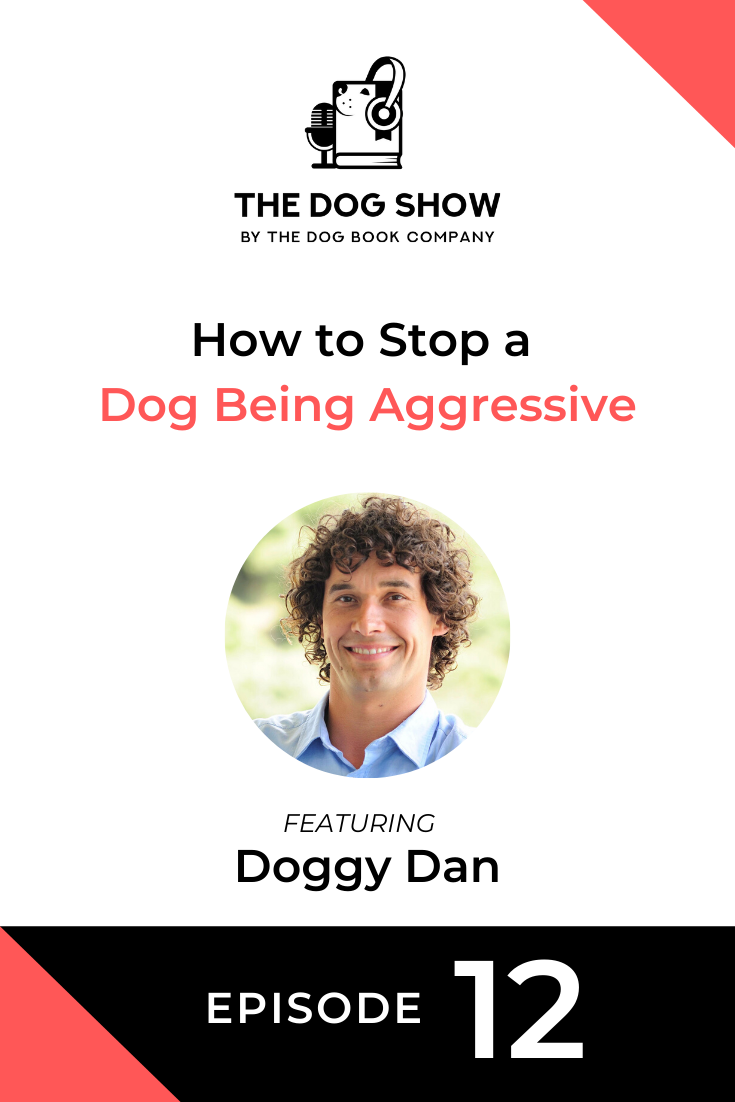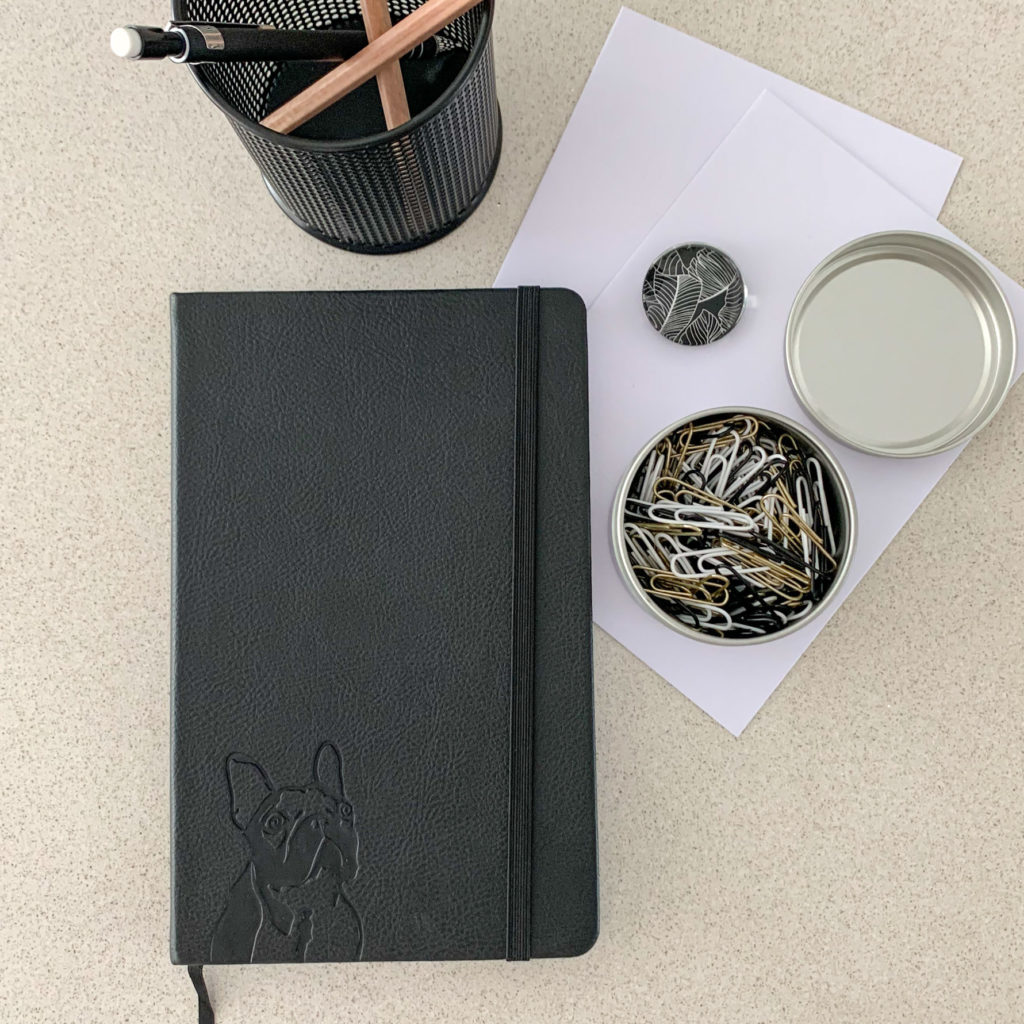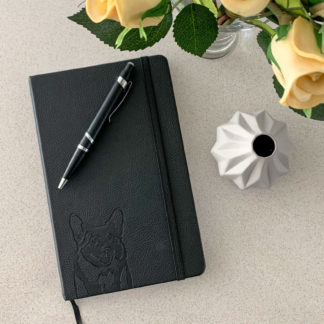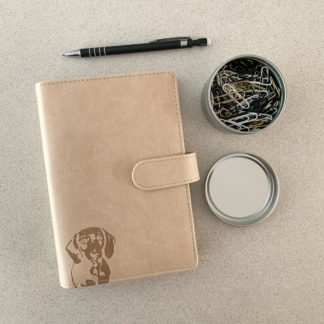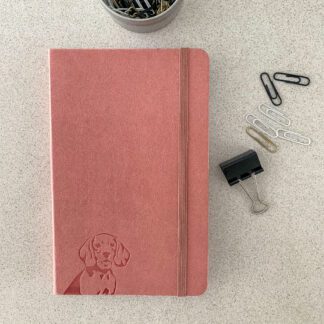
Are you trying to stop your dog from being aggressive?
This episode of The Dog Show featuring Doggy Dan could be exactly what you’re looking for.
Dan is the founder of The Online Dog Trainer, a wildly successful training program for dog owners. In the last decade, he has helped over 56,000 people successfully train their dogs to overcome behavioral issues. Dan is also the owner of three dogs; Inca, Moses, and Jack, and the author of the book What the Dogs Taught Me About Being a Parent.
In the interview, we talk about why dogs display aggressive behavior and how you can stop a dog being aggressive with Dan’s one-of-a-kind training process; The Dog Calming Code.
Listen
Watch
Read
Will: This episode of “The Dog Show” features Doggy Dan. Dan is the founder of “The Online Dog Trainer,” a wildly successful training program for dog owners. In the last decade, he has helped over 56,000 people successfully train their dogs to overcome behavioral issues. Dan is also the owner of three dogs, Inca, Moses, and Jack, and the author of the book, “What the Dogs Taught Me About Being a Parent.” In the interview, we talk about why dogs display aggressive behavior and how you can stop a dog being aggressive with Dan’s one of the kind training process, the “Dog Calming Code.” Doggy Dan, so welcome to the dog show. Thanks for coming on today.
Dan: My pleasure.
Will: I want to start out to hear a little bit more about your three dogs. So you’ve got three dogs, Inka, Moses, and Jack, do you want to tell me a bit more about them?
Dan: Yeah, for sure. So just like people, they are all different, you know, couldn’t be more different if they tried to be honest. So I always talk to people about the range, one of the easiest ways to kind of categorize a dog’s personality is whether they’re confident or fearful. So if you think of it like this, we’ve got, and for those of you who are just listening and can’t see my hands waving around, I got one hand on the left-hand side and one hand on the right-hand side over here, so as wide as it can be apart sort of thing. And if confidence is on the left, that’s where Jack sits, he sits right at that extreme. He is the most confident and with that comes dominant dog. He’s also powerful, big beast. He’s called a Catahoula Leopard Dog, power part.
Will: It sounds powerful.
Dan: He’s powerful, he’s got one blue eye, one brown eye. And when he looks at you, he doesn’t blink and he doesn’t look away, you know what I mean? He stays vibrant. That’s Jack. So he’s a pack leader, sort of dog. And then on the right-hand side, we have little inky-tinky, she’s a whippety pit bull. And she’s one of the most nervous, fearful dogs when we got her. This is like their personality, their natural, that personality nature, which is very hard to change. So we’ve got those two extremes, little nervous inky-tinky. She’s actually a grandma now about 14 years old. Jack is about six.
And then in the middle, we have Moses who’s, yeah, he’s a working dog. He’s like a border collie cross huntaway lab cross. So he’s a…he likes to just, he’s got tight muscular structure, he’s got black and white hair like a border collie, and he just likes moving and jogging. He would jog for eight hours a day, every day. He’d love it on a farm. And he tries really hard to be above Jack in the pack, but Jack is the king. And so Moses is this very, very second in command, kind of trying hard all the time but Jack doesn’t give an inch. That’s the three dogs.
Will: Do you think that dogs can hover between those two ends of the spectrums that you mentioned?
Dan: Say that again, the dogs, you mean one dog in particular or all dogs?
Will: Not one dog in particular because I guess the reason I ask is in different situations, sometimes I notice dogs will have a different, I guess, default way to act.
Dan: Absolutely. So on the farm, that is one of the few, when I say on the farm, we don’t have a farm. But my wife goes and rides a horse on somebody’s farm and lo and behold, Moses literally just takes the lead. He says this is my domain, I know what’s going on here, buddy. And it is like, it is in his DNA, which I’m sure it is, it’s in his bloodstream. He knows, we said it the other day, he can touch these electric fences and he can almost hear the tick, tick. He goes up to them and he pushes through underneath. It’s like he doesn’t get hit by the tick electric shock because he almost understands how the electricity works through the wire, that is a farm dog and so he runs around. And Jack on the other hand has been bolted by the electric fence just too many times and he really goes, I don’t understand this place, this is crazy. He’s also not sure of how the horse works. Moses is like, it’s easy, man, it’s a horse, let me show you just. So it’s incredible in that place, Moses takes the lead a bit and yeah, in other situations, you know, but generally speaking, they hold.
Will: You mentioned that Moses requires quite a lot of exercise if there’s a bit of border collie in there. He could run forever. How do you manage the, I guess the different level of exercises that each of the dog needs on a daily basis?
Dan: Yeah, yeah, with difficulties sometimes. I mean, it is tricky, but generally speaking, you know, we go for a walk, we go for a far walk, Moses just jogs around nonstop and Jack is more of a sprinter. So he sprints and then he’s got tired and then he sprints again. So they do what they need to do but for sure Moses could do more. The problem with Moses and exercising him more is we actually found if we took him out for two walks a day, he did get fitter, even fitter. And then you’d stand up towards the end of the day when they’d had two walks and he’d jumped up, wagging his tail like are we going again? I was like, he wants another walk, this is just getting silly. You take him for three walks, he’ll want four and if you take them for four, he’d want five. So we actually cut it back and said no you’re gonna have one walk a day, one big walk and then he’ll know he can switch off and relax. And, yeah, he was getting too fit and healthy.
Will: Yeah, well, I don’t think there’s many dogs that would turn down a walk even if they were outside.
Dan: Yeah, for sure, for sure.
Will: Would you say you have a favorite dog breed if you had, I mean, you’ve been experienced with so many other breeds I imagine over your career and your life, but would you say you have a favorite dog breed?
Dan: I would say I do not have a favorite dog breed. I have some sort of preferences but the preferences I have are just totally kind of knocked out the water when I actually meet another breed which I thought I didn’t like, you know, I might not gonna say don’t like, what I mean is I don’t have a really strong urge towards that breed. And then I’ll meet a dog who’s the most sweetest natured or personality and that sweetness could be just cute or powerful or obedient or cuddly or, and then you just fall in love with that breed. I would suggest that most people who dislike a certain breed they actually just haven’t met and connected with many dogs of that breed which love them and which were amazing.
Will: Yeah, I think that’s a really good way to sum it up because I think I’ve had that experience in the past myself where you think, oh, for whatever reason, they’re indifferent about a certain breed but then when you have more exposure to them because a friend has them or you dog sit them or something, you all of a sudden realize so many great traits that have you didn’t know about so.
Dan: It’s just basically racism in dogs, it’s breedism. All of it is breedism, you know? You prejudice because you have one bad experience with the German Shepherd then, you know, I hate those German Shepherds and why anybody likes them. And then I go to another house and they go, oh, we’ve had 12 German Shepherds, it’s the only dog for us. And they actually repeat the same reasons only the reverse of that reason as to why they love those. So one person say they’re just disobedient, they’re aggressive, they’re just not very affectionate and then the other people who love them will say, they’re just so obedient, they’re so affectionate, they’re so protective of the family, they’d never be aggressive to you, you know? Well, it’s just how we see it through our own eyes.
Will: Exactly, it comes down to your own experience. I imagine it’s similar in the same respect, as much as you people might dislike a certain dog, they also get very attached to a certain breed as well.
Dan: Gosh, yeah. Many have three and then that becomes a significance in life that I’m a pug person, which is beautiful, don’t get me wrong. I’m not knocking it. I actually like the variety. I enjoy the variety.
Will: Okay. Yeah. Yeah. So the Online Dog Trainer, which is your business, you’ve got over 100,000 subscribers and you’ve got an extensive background working with dog behavioral issues across, you know, you’ve written a book, you’ve been on TV, you’ve pretty much done everything there is when it comes to dog trainers. What kind of led you into this industry? What got you into this industry initially?
Dan: I did a lot of jobs, a lot of careers, and I didn’t enjoy any of them. And I refused to settle for a career in my life which didn’t really spin my wheels and motivate me that I wasn’t passionate about. So I kept looking and finally I quit a corporate career as a sales manager at a very large wine company, I was in charge of a team of people and I quit that. I went to a careers advisor and I said to her, look, I’m an ex-policeman, I’ve got a civil engineering degree, I’ve taught maths in school, you know, I need to find something I’m passionate about. And she actually helped me identify the dogs was a key part of my life and had been for the last 35 years actually.
And I said, is that a big thing? She says throughout your life from… She actually took me back into almost the hypnotic state and said, tell me your very, very first memory. And it was like a spider’s web, it was spirals. She drew outwards at five, do you remember at six years old and throughout my life, dogs popped up in that spiral. Whether it was before school aged five, I remember going to walk Mrs. Hackett’s dogs, which were Weimaraners. She was called Mrs. Hackett. She had five Weimaraners and I used to walk them with her.
And there was eight dogs on our street and they all began with the letter B, Bernie, Barron, Ben, Billy, Barney, Bernie. And then I went to my grandparents’ house in the summer holidays, played with the dog called Bunny. And she just said, that’s a massive thing, you keep bringing up dogs and then I just went for it. I’m somebody who once I turn and focus on something, I’m pretty committed to it. So I just started tracking down as many dog courses, books, you know, qualifications sort of things I could. But most importantly, what I found was useful was actually experience on the ground with large packs of dogs. So my dogs are really the ones that taught me is how I feel.
Will: That was an achievement in itself walking five Weimaraners at the same time.
Dan: This lady she must’ve been about 60 years old and she had a big whistle and the dogs would disappear but if she needed the dogs, she’d blow the whistle. And true story, she was once walking in the dean which is a very rough patch of land without any houses nearby. And two men came up and started to attack her, tried to rob her. They didn’t know that she had five dogs because none of the dogs were around her. She blew the whistle and five dogs, it must’ve been like Hound of the Baskerville, you know, these five dogs came just charging towards these men and knocked them to the ground and, yeah, gave them a severe telling off.
Will: Yeah, that’s a good story, so hopefully alerting for those men that were doing the wrong thing.
Dan: It’s a lot of dog, five Weimaraners
Will: They’re not small either, are they? Or?
Dan: No, they’re not. And no one would have had to explain to them what was happening, they’d have just picked up on the energy, her shouting and screaming and two men.
Will: Yeah, interesting. So on your website, you’ve got ton of information about behavioral dog issues. One that really caught my eye was the dog calming code, so that’s one of your courses and it helps people deal with dog aggression predominantly, is that right?
Dan: Yeah.
Will: Yeah. Okay. So I guess one question I had about that was what types of aggressive behavior can be, I guess, fixed using your process in this course?
Dan: Pretty much anything, to be honest. The dog calming code, it’s the most powerful course we have. And just for anyone who’s interested in, it is included in the complete pack. So whilst the dog calming code is what I’m gonna share and talk about a little bit today, if you really committed, you know, I’d suggest you go and check out the complete pack partly because it has a $1 trial. So you can actually get the trial, the whole thing before you even get a 3 day trial for $1. But what the dog calming code is it’s that fundamental piece of the puzzle which so many people struggle with because it’s almost like you have to get your dog on side. You have to get your dog understanding that you’re the one that they should be listening to.
And when it comes to aggression, it’s especially when there’s danger around because most people who’ve got dog aggression problems, most people, not everyone, they have a dog who’s pretty, pretty calm in the house, pretty obedient, sit down, stay, rolly-polly, high five, they can get into all these tricks, walks nicely on the lead. And it’s only when it really matters when there’s another dog, the dog suddenly goes boom. And that may be around, it may actually be more around food or it may be because the dog is too excited around other dogs. It may because the dog is fearful around other dogs, it may be aggression towards people, it may be aggression around for the property, at the front door, or they may just have a dominant dog. Or the other area of aggression is when there’s a dog on a dog living in the same home.
So all, I think that’s eight different types of aggression, there’s the eight main types of dog aggression. And all of them really kind of falls apart in that split second when the two dogs come together at the front door to go out or when there’s an excited dog turns up in your dog’s face, or your dog may be that excited dog to see other dogs, or fearful, or a person comes to close. And suddenly all the training in the world just is not worth anything. All that sit down, stay, recall, walk.
And for me, the analogy, the best analogy I can give is it’s like a child, a boy or a girl, who just keeps getting into fights at school. And at that point where something happens and they just get angry and start to build up and then just explode and punch somebody, it’s almost like most training, most dog training that people are doing is as effective as getting that child and saying to that child, we’re gonna teach you how to do art, or we’re gonna teach you how to do spelling, or we’re gonna get you to do more mathematics. It doesn’t really help that much at that point when the person is gonna explode because they’re so angry. There’s an underlying issue which is not being addressed.
And so you might be able to do all the times table and learn all your times table, do algebra, but that doesn’t help the child become calmer when it really matters. And it’s like that with dog training. People are doing all this walking around in circles with a piece of cheese, and I’m not saying you shouldn’t use cheese, but you know what I mean? All this training, repetitive training or sit down, stay. But it doesn’t sort out the real underlying issue. And that’s what the dog calming code does. It goes to the foundation.
And so much of it is about who’s in charge because those dogs, when you give them the wrong message and they think that they’re in charge, that’s the real reason. That’s the real problem as to why they’re being dominant, or whether they’re scared, or whether they’re fighting in the same house, or really aggressive around the food. So when you deal with that cause of the problem, the underlying issue, suddenly things start getting really way better, much, much quicker. So it’s easier and faster than traditional dog training.
Will: Yeah, that’s interesting. I guess from an owner’s perspective, I’m always thinking about the symptoms, right? You know, the things, the behaviors that they’re doing. You’re thinking how do I fix that? Whereas you’re almost reversing that and saying, you need to get back to what the core issue is, you know?
Dan: Yeah, absolutely. And having worked with 3000 dogs one-on-one I should say, and received thousands and thousands of responses of people who just said can’t believe it, unbelievable. Yeah, these are people who’ve spent thousands of dollars with repetitive training techniques, some positive only, you know, chicken and cheese and a clicker, some of them far more negative with a shock collar and a choke chain prong collar. And then they try and approach which is getting the dog on side and helping the dog settle into a position kind of where they’re kind of more focused, more calm. So that’s what the dog calming code is.
Will: So at what point should an owner really be looking into a course like this? For example, obviously, if a dog is outwardly aggressive, that’s like a natural thing to do. But is there earlier signs in behavior that an owner might go, you know what? Now’s the time to nip this in the bud rather than letting it get worse?
Dan: Yeah, I mean, it’s almost like what age would you start training your child, your baby?
Will: Your book.
Dan: “What the Dogs Taught Me About Being a Parent”. You see, one of the things about this, that’s me with some hair on there, everybody. So one of the things about the book was I had this question when I wrote the book was when do I start training my son? When do I start training my dog? When’s the right time? Well, I knew with puppies you want to just start straight away. And it’s the same with children. I mean, when I say training, the training is slightly different when they’re, you know, 3 weeks old to when they’re 13 years old, for sure. But it’s the same with your puppy, the training you want to be putting in place at eight weeks old, there was some training there. For example, if your puppy’s in the crate and it starts crying because it starts saying, I want this or I want that, I mean, don’t get me wrong, it’s different if it needs a weewee, peepe. But if your puppy is crying saying, I want to come out and you’ve got to let the puppy out, then you’ve just started training the puppy to train you.
Will: Yeah, they learned how to get out.
Dan: So that’s eight weeks old. So what I’m saying is this stuff you want to avoid doing wrong at eight weeks old and this stuff you want to be doing teaching the puppy at eight weeks. So there’s no time like the presence for putting this in place because it’s basically that’s the good manners stuff, it’s the creating the strong connection. It’s almost like creating a positive relationship rather than a negative kind of unhealthy relationship. How do you create that healthy relationship? That starts straight away.
Will: I guess the ideal situation is to get as early as possible when, you know, the dog or the puppy is still developing, right? But that’s not always, it’s not always that perfect, right? Maybe you’ve rescued an older dog or maybe you just haven’t been as diligent when you were younger and you’re trying to deal with dog aggression now. So how much harder does it get when a dog is older and is it still possible to overcome aggression issues?
Dan: The thing with dogs is there are dogs who’ve had no training and they just for whatever reason, DNA, the breed of the dog, and maybe they just grew up in a nice environment even though there maybe kind of run pretty wild but they’re friendly. So some dogs can be really old, you know, 5, 8, 10 years old and they’re pretty nice, easy cruisy, relaxed dogs. And other dogs, you know, they may not have had the training put in place. I worked with one just the other day, I think he was seven months old and he was a nightmare, he was so spoiled.
He’d had five months of all the wrong behaviors being done. Even this lovely couple, they came to work with me, a little Pomeranian dog. And as I went through the dog calming code with them, they went, Oh, we’re doing the opposite of this, we’re doing the opposite of this, we’re doing the opposite of this. I said, yeah, you’ve got the most spoiled little dog who thinks he’s the king, he thinks he’s in charge, he thinks he has to protect you, he thinks he has to protect the property, protect the car, that’s his job as the one in charge. So, I mean, we were at a Pomeranian who’s seven months old, who’s just doing the [inaudible 00:19:56] lead, pulling on the lead, his eyes are bulging, he’s so stressed out, he’s weeing himself. It was horrible to watch.
And he’s terrified because this is a dog, as I talked about on that scale, he’s by nature, he was a fearful dog. He was not a confident boy, he was terrified. And they had made this terrified little dog the king in the house of five people. So he did what he wanted, didn’t listen to anybody, ruled the roost and any noise, he was barking, terrified, scared, shaking. How can we help him? The answer, we’ve got to show him he’s not in charge. We’ve got to get him to take a chill pill, put the dog calming code in place, they will have a different dog. And that’s a dog who’s seven months old and was in real trouble. So, yeah, it’s no time like the present and every dog is different. Age isn’t really the thing either. Does that make sense?
Will: It’s about the process more than the age then?
Dan: Yeah. I mean, you can have a pretty young dog who’s pretty screwed up and you can have a much older dog who’s pretty cool, pretty cruisy. And you can have an older dog who’ll learn really quick, or you can have an older dog who’s never really, really hard to change. You know, just like people, some people just can’t change aged 40. Other people who are aged 50 are like, I’m ready for a change, I’m ready for a break. And that’s what I mean by they are as varied as people in every sense of the way for me.
Will: So I guess the million-dollar question is…
Dan: Yeah, what is it?
Will: …which would summarize everything we’ve discussed so far on the podcast to give everybody that listens to everything they want to know about dog aggression, how do you stop a dog from being aggressive?
Dan: Okay. So the first thing is this is contrary to all the other types of dog training. The thing is to change that relationship that you have with your dog so they are not in the driving seat making the decisions. Because if you think about two dogs in the same house, the real problem is that they’re fighting over who’s in charge. Trust me, it’s nothing to do with, you know, if they both know that you’re in charge and even more powerful is if you have a male and a female human in the house who are in charge because they’re both male and female bases are covered, then that’s that sorted.
If you have a very dominant dog, then one of the things is if they think they’re in charge, they will be far more going over I’m in charge, head over the top of all the other dogs. I mean, I’ve got one of these dogs in Jack, so I know how much trouble he was. I experienced it. And what solved it was me and my wife, Jenny, saying, Jack, you are not king, you don’t have to do all that stuff. Chill, be tolerant. And his tolerance increased hugely not through there isn’t actually that much, well, there is some training you can do, but it’s far easier to deal with the cause of the issue that he thinks he’s the king. And with Inka, what made her more confident was us saying, Inka, we’re in charge, trust us. When we’re around, you don’t need to make decisions, you know? And it’s the difference between walking in the woods, see if I’m walking in the woods as if I’m a 10-year-old boy walking in the woods and it gets dark and I’m lost, if I with my dad and I trust him… I still remember this as a child, you see. So this is why I use the analogy.
I was in the UK and the wind was blowing. And we came out of the woods and there was an old church with gravestones. And leaves were actually blowing around. And I was like, oh no, this is a horror movie, this is terrible. And I’m holding my dad’s hand and he must’ve been much older than me because I was down here holding him. And I remember looking up at my dad thinking are we in trouble? And I just remember watching him yawn, he wasn’t bothered. I thought if you’re not bothered, I’m not bothered. There was no training required, I trust him. I guess that’s how it works with the fearful dogs, become the one in charge, decision-maker.
And the other area which is very, well, the two other areas is one is that the dog is a hyper dog. If the dog is like, so hyper, busy body, constantly getting into trouble because it raises up to the other dog and licks their faces and jumps on them and barks, then if you say to that dog take a chill pill, relax, you don’t need to go and meet and greet all the other dogs. By saying that you’re not in charge, you tell that dog you respect their space. You get the dog to learn how to respect other dogs spaces and you do that primarily by getting the dog to respect your space. And this is all part of the dog calming code, how do you train a dog to respect you?
If your dog doesn’t respect your space and you and jumps on you and jumps up at you at the door, come on, surely you can make the connection. You think your dog is gonna be respectful of other dogs at the dog park? No, the dog jumps on them. You know, I’ve got, there’s a title in this book, it says, if your child does not respect, if a child does not respect their mother or father, they’ll respect no one in the world. It’s not completely true but you hear where they’re coming from. As a parent, you need to teach your child to respect, and I mean respect in a loving kind way, not kind of fear, but have some respect for. And so if you train your busybody dog to be, you know, calmer and that you’re in charge, they are just such a different energy at the dog park. They don’t get into trouble. And then the last area is around the house and around the front door. The real issue there is the dog thinks they’re in charge, they are just protecting the fort. And in the same way, if you come to my house and my doorbell rings, who would answer the door?
Will: I’m guessing you based on what you’ve just said.
Dan: It’s my house. Of course I’d answer it, because I’m in charge. Now if I came to your house and you’re in charge at your house and your doorbell rings, who would answer the door at your house?
Will: Well, I would, but yeah, my dog does run to the door and cause a bit of a ruckus, yeah.
Dan: Don’t worry about your dog just now, I’m not judging you, I’m not judging you or your dog. But the point is at your house, you would answer the door. You wouldn’t have to train me not to answer the door at your house, it’s automatic because you’re in charge, the one that’s in charge answers the door. And that is the key thing that’s going on with these dogs. When they think they’re in charge, they will get to that door and they’ll bark and they’ll go a bit nuts. And you can do all the trying to get them to stand behind you but they’re kind of like, no, no, no, no, no, you don’t understand, this is my job, this is my job. I’ve got to check out this pizza man or whoever it is.
And so by dealing with the cause of the issue and saying to your dog you’re not in charge, they really do become much easier to train, take a chill pill. You know, the doorbell goes or the knock on the door, of course, everyone gets a jump, the dog gets a fright, woof, woof, woof, and jumps out of bed. But it’s then so easy to say, thank you, Bruno, in your bed, go on, I’ll deal with this. The dog will let you deal with it as opposed to the dog racing round barking, taking no notice of you. So that’s how you stop this dog aggression by becoming the one that’s in charge, developing that healthy relationship. And there’s a number of different exercises that I share with people on how to do that. And that’s primarily what the dog calming code is, understanding it through the eyes of your dog as to what’s in what’s important.
Will: Yeah, so my summary of what you’ve just said and everything we’ve discussed today is really, and it goes back to the beginning of the interview, you spoke about understanding where your dog is on that spectrum of pack leader to timid and potentially frightened in certain situations, kind of understanding what your dog’s like and then getting to the core of what may be causing the issue and letting them know who was in charge and putting them in a position where they feel trusted and safe?
Dan: Yeah. So regardless of whether you’ve got a confident dog, you still need to make sure those confident dominant dogs know, yeah, you’re a confident, dominant dog, Jack. But you don’t need to go around bossing all the other dogs, we’re in charge. And with the fearful ones, you need to give them that security. And the dog calming code, basically it’s through some very simple exercises, you know, and all of these are captured on videos, it’s things like controlling the food, you know, to give you an idea, to give you a taste of what’s a teaser of what’s inside. If you leave food on the ground, that is game over. That dog is in charge. The easiest way to screw your dog up is to leave a big bowl of food on the ground, which is what this little Pomeranian had. And if he can come and graze then he’s in charge, he’s controlling the most important resource there is in the world and you’ll end up with a far more dominant dog. Kind of one that thinks he’s in charge.
Will: Yeah, so I guess that’s the overarching understanding of how to deal with dog aggression, but if people really want to deal with it, tactically and understand the steps they need to take, they should be checking out the dog calming code and getting the $1 trial for all your courses, which sound fantastic.
Dan: Yeah, the dog calming code you can purchase that on its own as an individual thing, however, it’s included in the complete pack and you can trial a complete pack for $1 U.S. for 3 days. So that’s the way I would go because then you can look through the dog calming code and see all the dog training, to do with dog aggression. You know, when you go into it there’s a course called dog problems. And under dog problems, it has dog aggression, pulling a leash. And if you go into dog aggression, it has barking in the, you know, aggression towards other animals, aggression to dogs, aggression to dogs in the same home, aggression to cats. There’s even a video of me working with a dog who’s only got three legs and he’s trying to attack the horse. There’s a lot of stuff in there.
Will: That’s cool. Yeah, and then like there’s no risk, I guess a dollar, what’s a dollar? If you can you get a free trial and then find if the stuff you need is in there, perfect, you can keep on with it.
Dan: Yeah, we have a laugh when people go, thanks so much can you cancel the trial we’ve solved the problem? It’s like, oh great. That’s the problem with having such a powerful program. They literally within three days go, we’ve got it, we see what we were doing wrong because it’s the simple stuff. They had the food on the ground or they were coming in the house and greeting their dog, hello boy, boy jumps up, jumps on them, they pat him and cuddle him. They don’t understand that’s game over, your dog has just invaded space when you came in the house, that is the worst thing to do. And not understanding why the dog constantly coming over and climbing on top of them or demanding pats or how to deal, for example, with barking. If the dog barks in the house, what do you do? How do you stop it? You have to understand how to take control of that situation and say, hey, buddy, I’m in charge, no barking, the dog settles. And then when you go outside, the dog knows you’re in charge, totally different dog.
Will: Perfect. So in the notes I’ll include a link to the $1 trial, the dog calming code as well, so people can access that course if they’re looking for it. Where else can people find out about everything that you’re doing, Dan?
Dan: I’m just trying to think, do I want to point people here, Facebook, YouTube? I’m trying to think where’s a good place to point them. I mean, there are some free videos, obviously on YouTube and I have a podcasting channel. The podcasting channels are really, if you’re interested and love dogs, then that’s another great place to go and listen to some of the stuff that I share. However, if you do have a behavioral issue, I really, you know, there’s blogs and all sorts of stuff. The biggest problem I have to be honest is the dog calming code is so powerful. I don’t like to put people down rabbit holes which lead to kind of crazy places when I know, you know, if you’ve got a problem, let’s just sort it. Let’s just go there straight away and sort it. It isn’t rocket science working with these dogs when you’re given the right information and it doesn’t take that long usually. So if you want to listen to all sorts of different things about dog training and dog food and dog advice and, you know, all sorts of weird and wonderful things about rescue organizations and DNA testing kits for dogs and stuff, then listen to my blogs. But if you want to sort your dog out, just go to the complete pack, take the trial.
Will: Sounds good. So the dog calming code, that’s where everybody needs to go and check out what you’re doing and get the $1 free trial, look at the course and solve all their, their big problems. So, Dan, thanks so much for coming on “The Dog Show” today. I’ve learned a huge amount. There’s certainly some behavioral changes that I think I could make with my dog and I hope everyone else takes them some jewels away from the interview as well. So thanks so much for coming on the show today.
Dan: My pleasure. Thanks for having me on, Will, appreciate it.
From Our Store
-
French Bulldog Coffee Table Book – The Book of Frenchies
From: AUD $59.99 Add to cart -
Dachshund Coffee Table Book – The Book of Dachshunds
From: AUD $59.99 Add to cart -
Pug Coffee Table Book – The Book of Pugs
AUD $59.99 Add to cart -
French Bulldog Notebook – A5, Hardcover, PU Leather, 100gsm Lined Pages, Bookmark (Three Colours)
AUD $34.99 Select options -
Dachshund Notebook – A5, Hardcover, PU Leather, 100gsm Lined Pages, Bookmark (Three Colours)
AUD $34.99 Select options -
Pug Notebook – A5, Hardcover, Black PU Leather, 100gsm Lined Pages, Bookmark (Three Colours)
AUD $34.99 Select options -
French Bulldog Planner – PU Leather Exterior, Metal Loose Leaf Ring Binder, 100gsm Paper (Two Colours)
AUD $64.99 Select options -
Corgi Notebook – A5, Hardcover, Black PU Leather, 100gsm Lined Pages, Bookmark (Three Colours)
AUD $34.99 Select options -
Dachshund Planner – PU Leather Exterior, Metal Loose Leaf Ring Binder, 100gsm Paper (Two Colours)
AUD $64.99 Select options -
Vizsla/Weimaraner Notebook – A5, Hardcover, PU Leather, 100gsm Lined Pages, Bookmark (Three Colours)
AUD $34.99 Select options -
Cavoodle Notebook – A5, Hardcover, Black PU Leather, 100gsm Lined Pages, Bookmark (Three Colours)
AUD $34.99 Select options -
Beagle Notebook – A5, Hardcover, PU Leather, 100gsm Lined Pages, Bookmark (Three Colours)
AUD $34.99 Select options
